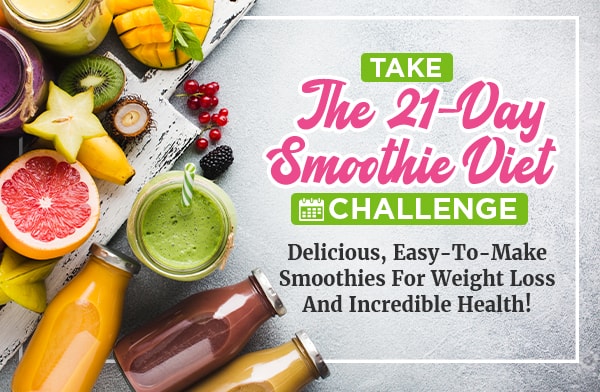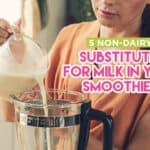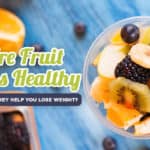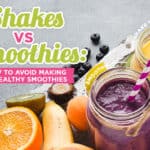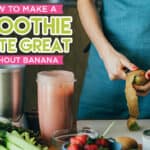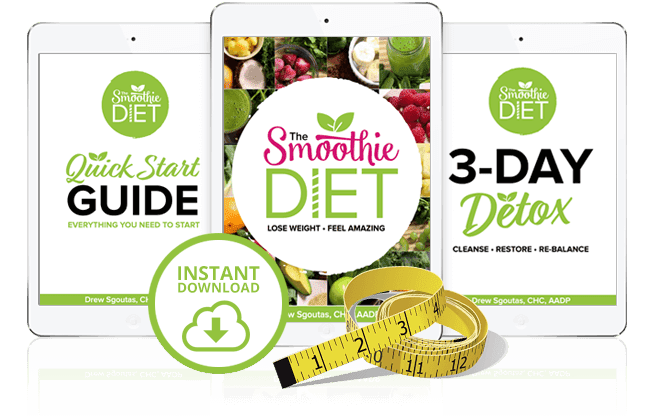Smoothie Ingredients List: The Best Base Ingredients to Start With
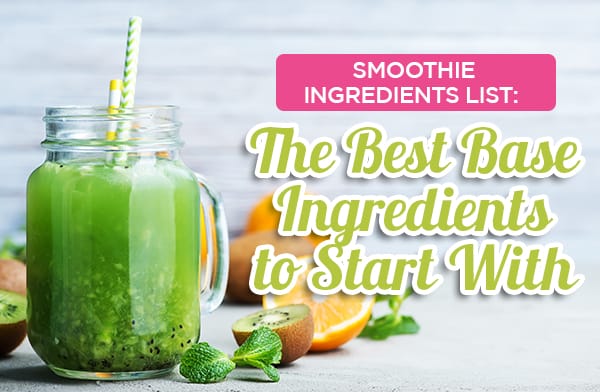
Pop quiz: what’s the difference between a good smoothie and a bad one?
Answer: a lot, actually, but one of the most important aspects is the base you use. Your choice of base affects the overall nutrition of your smoothie, as well as the consistency and texture. The wrong base can give your smoothie the wrong flavor, make it too thin or too thick, or even leave it tasting gritty.
So, I spent some time compiling an “ultimate list” of smoothie bases you can use. Different bases work best for different ingredient combinations, but I’ve tried to list the best options available across the board.
The Purpose of the Smoothie Base
A smoothie base is generally a liquid, or something smooth and creamy, to give your smoothie a base into which everything else is blended. It’s there for flavor and for nutrition, but it’s mostly there for texture. You can add a little more if your smoothie is too thick to thin it out.
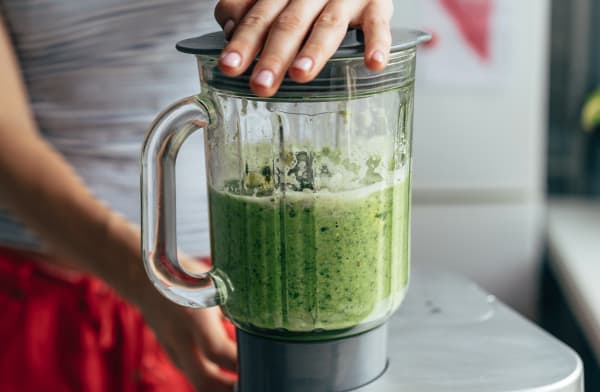
Picking the wrong base can leave your smoothie too thin, tasting watery, or with a poor texture. You want a base that can facilitate blending the rest of your ingredients, too. Your blender will have a hard time actually blending up all of your smoothie ingredients without some kind of base.
So, what are the best bases?
Option 1: Water
Water is perhaps the most basic smoothie base you can possibly find. It’s zero calories, it has zero additives (other than the minerals the city might add to it or that might be present in your tap water, like iron, calcium, or fluoride), and it’s neutral in flavor.
I don’t think water is a good smoothie base.
Don’t get me wrong; there’s no reason to avoid water like there is for some other bases. It’s healthy, as long as the water is good. It just doesn’t add anything to your smoothie. It helps smooth out the texture and gives your blender a liquid to work with, but that’s basically it.
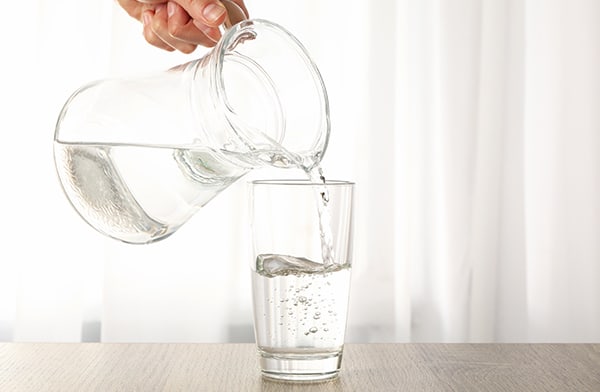
Many people use ice as a smoothie base along with their other liquid bases. I don’t usually recommend it.
- Ice isn’t a liquid, so it doesn’t help you blend your smoothies.
- Ice helps thicken your smoothies, but melts quickly and leaves them thin and runny.
- In some blenders, ice can ricochet around dangerously or even get caught in the blades, and if your blender isn’t strong enough to crush ice, you risk damaging it.
Usually, instead of ice, I recommend a frozen berry or chunks of frozen banana for the cold and thickening properties.
Option 2: Milk Alternatives
There are a lot of different milk alternatives on the market.
- Soy milk.
- Pea milk.
- Oat milk.
- Almond milk.
- Cashew milk.
- Rice milk.
- Peanut milk.
- Flax milk.
- Hemp milk.
- Walnut milk.
- Hazelnut milk.
- Banana milk.
- Potato milk.
Of course, you’re likely only going to find five or six of these on your local grocery store shelves. Some of them are still quite rare or are still in “make it yourself” territory.
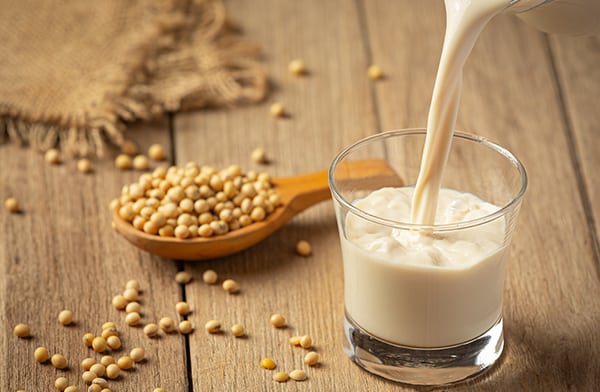
Milk alternatives usually soak the ingredient in question in water, strain out the non-liquids, and may add extra ingredients to give it a better texture or flavor. Some require more processing, though, like soy or pea milks. Those, for example, use protein isolates that need to be processed and derived before adding to water.
All of these kinds of milk are healthier than whole milk and dairy in general. They also all have their own unique flavors. Some are sweeter, some are nuttier, some are creamier; it often just comes down to finding the one you like the most as a smoothie base.
Just make sure to be aware of specific issues you may have. For example, stay away from peanut milk if you have a peanut allergy.
Option 3: Tea
White, black, and green teas are all variations of the same plant, just processed differently. They’re full of polyphenols and antioxidants, and tea is naturally zero calories. It’s like water with a bunch of added nutrition.
If you’re a fan of tea, you might wonder how the flavor fits with smoothies. The answer is: you won’t notice it. Tea is a relatively subtle flavor, and when mixed into all the other smoothie ingredients you’ll be blending up, it won’t come through. It basically works the same as water, only much, much healthier.
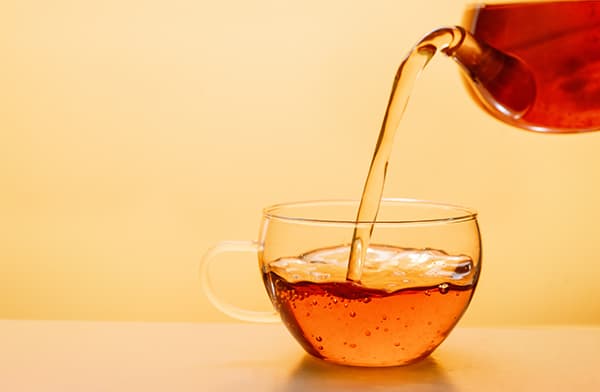
The one thing to watch out for is black teas, which naturally have a decent amount of caffeine in them. It’s not necessarily a bad thing to have some caffeine in a smoothie, but you should be aware of it before you drink it.
I don’t normally recommend tea as a base, but that’s because it adds to the preparation of smoothies, and I tend to go for faster, easier-to-make smoothies. You can always brew up a big pitcher of green tea ahead of time and either freeze it into cubes or just store it and use a cup or so at a time in your smoothies.
Option 4: Coconut Water/Coconut Milk
Coconut liquids come from the humble coconut. Coconut water is the liquid found in young coconuts. Coconut milk comes from drying, grinding up, and rehydrating the meat of an older coconut. Coconut milk is higher in natural, healthier fats and is both thicker and sweeter than coconut water.
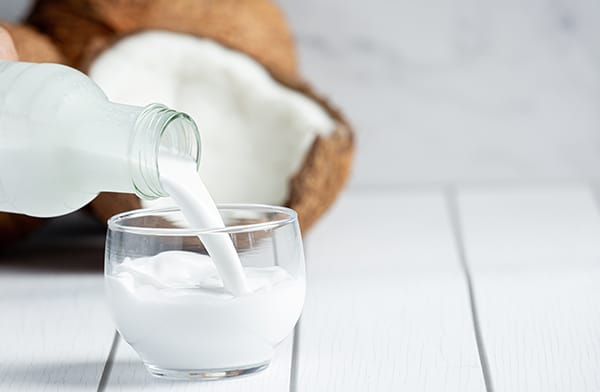
Both forms of coconut liquid are relatively healthy and are good ways to add some fat and some sweetness without adding a bunch of unhealthy fats or sugars. They’re great, and I recommend them in a lot of my smoothie recipes. The main reason to avoid them, really, is just if you don’t like the flavor of coconut. Even then, in many recipes, you won’t notice it under the other, stronger flavors, especially if you use coconut water.
My Recommendations
If you’ve checked out the Smoothie Diet, you can see three weeks of recipes for daily smoothies to replace your breakfast and lunch. They’re all designed to be healthy, give you plenty of variation, and help you cut calories and lose weight.
Every one of those recipes uses one of three liquid bases: almond milk, coconut water, or coconut milk.
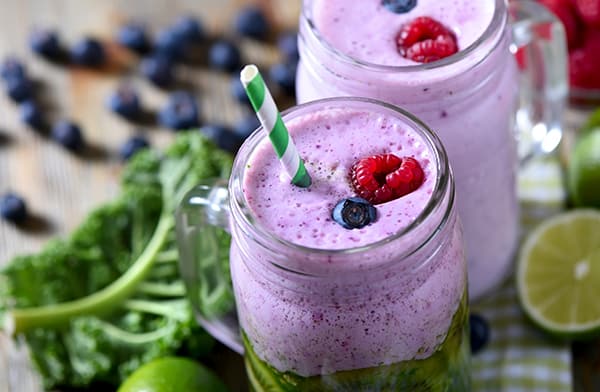
These three are by far the healthiest bases that still have some creaminess and flavor to them. Water might be lower in calories or sugar, and something like tea might have more nutrition to it, but I’ve found that they don’t leave your smoothies quite as creamy and rich.
I will always recommend these three over just about anything else. However, you’re also free to customize your smoothies however you like. Don’t like almond milk? Try another non-dairy milk alternative, like pea milk or cashew milk. Don’t like the flavor of coconut? There are plenty of alternatives. You’re the master of your smoothie recipe book, so customize them to suit your tastes.
Smoothie Bases to Avoid
You may have noticed there are a few prominent liquids I’ve left out of the list above. That’s because they’re generally not very healthy for you, and while they make delicious smoothie bases, they won’t help you with your health and weight loss goals. What are they?
Fruit Juices
Fruit juices are pretty much the worst possible way to consume fruit short of candy. In a way, they’re really just candy water.
A huge amount of the benefit of fruit comes in the pulp of the fruit. That’s where all the fiber and much of the vitamins and minerals are. When you juice a fruit, a lot of that pulp is removed and discarded. Even worse, when you buy a fruit juice, that juice will be a) mostly water, and b) loaded with added sugar. Even if you buy sugar-free or no-added-sugar varieties, it’s still packed with natural sugars and very little else.
Fruit juices are delicious, and it’s hard to reconcile the health benefits of fruit with the detrimental effects of fruit juice, especially if you were raised (like I was) believing that orange juice cures all ills and fruit juice is always healthy. Unfortunately, it’s just not true.
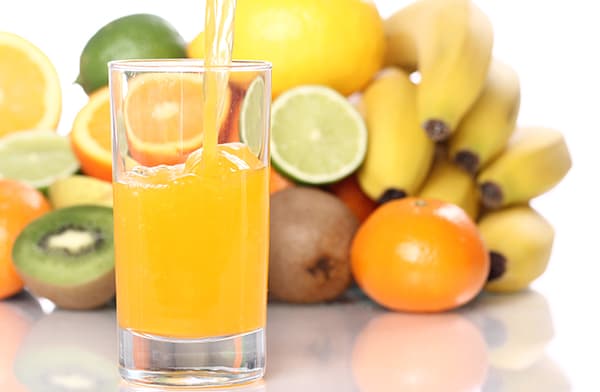
If you absolutely must use a fruit juice, there are a few less-bad options:
- Pomegranate juice. This one is packed with antioxidants, and pomegranates don’t have a ton of fiber and pulp in the first place.
- Cranberry juice. Same with pomegranates, cranberries don’t have a ton of pulp anyway, and cranberry juice can be a very potent antibacterial.
- Orange juice. Specifically, orange juice with no added sugar and with the pulp still in. Best yet, squeeze your own.
Other kinds of juices, especially “fruit punch” and the like, are usually much worse for you. Just avoid them and go with something else.
Whole Milk
Whole milk is pretty bad for you, and you might not realize it. That’s because there has been a decades-long advertising campaign by dairy farmers to promote the health benefits of milk, usually by promoting the vitamin D and calcium in the milk. In fact, whole milk is occasionally even called “vitamin D milk” because of it.
Unfortunately, whole milk has two things working against it. First, it’s packed with sugar in the form of lactose. Not only is that bad in terms of just being a sugar, but it’s also bad because many people can’t properly digest lactose or are even fully lactose intolerant. You’ll end up with an upset stomach and digestive distress.
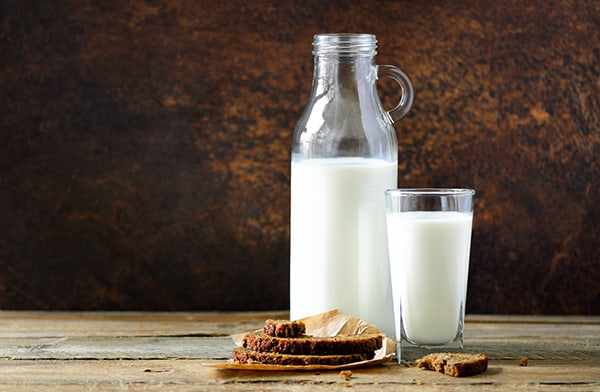
Also, whole milk is relatively high in saturated fat. Some fats are good for you, but you want your fats from healthy sources, like avocado or MCT oil. Milk has the wrong kinds of fat in it.
Skim milk is “better,” but it’s just flavored water at that point, and there are much tastier milk alternatives that won’t be so disappointing.
Other Dairy
Other forms of dairy are common in smoothies, but they aren’t usually all that great.
Yogurt is one of the biggest offenders. Some yogurts are fine – a low-fat Greek yogurt with no added sugar can be a good way to make an ultra-creamy smoothie. However, the vast majority of yogurts are packed with added sugar and are very high in fats, so they aren’t very good for a healthy weight-loss smoothie.
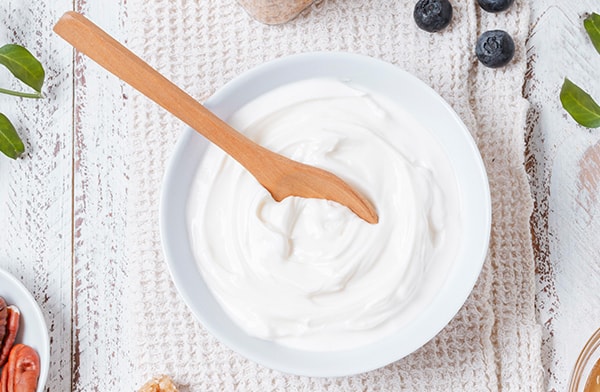
Kefir is one that I have listed right on the edge. It’s high in fat and sugar, but it’s also fermented, making it a probiotic. It can be a good smoothie base, but it might also be a little over the top, depending on your weight loss goals and the rest of your diet. Be wary of flavored kefirs, though; much like flavored yogurts, they often have a lot of added sugar in them.
I’ve also met a few people who put ice cream in their smoothies as a base. Unfortunately, no matter how much added fruit and veggies you put in it, that’s just a milkshake. It’s about as far from healthy as you can get in a beverage that isn’t soda and isn’t alcohol. Sure, it might be delicious, but it’s no longer a smoothie. And yes, before you ask, the same goes for sorbets and sherbets.
What’s Your Favorite Smoothie Base?
I know many of you are newcomers to the world of smoothies, but some of you are old hands like me. For those of you who have strong preferences or opinions that I haven’t mentioned above, I’d love to hear your ideas. What bases do you prefer, how do you like to use them, and how do they help with weight loss? Drop me a line, and let’s have a chat.
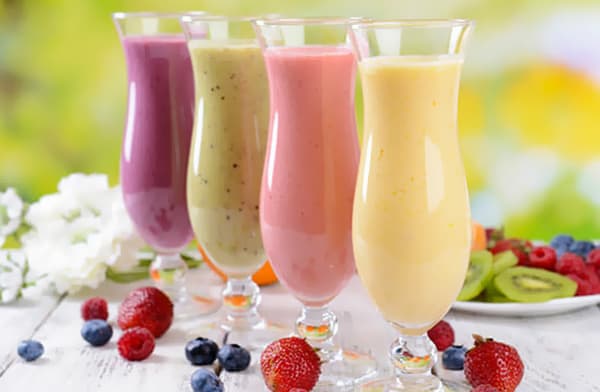
For the rest of you, I highly encourage you to experiment with a variety of non-dairy milks to find your favorites. I usually recommend almond milk, but that’s because it’s readily available and reasonably healthy. Plenty of other milk alternatives are regionally available or are becoming more available, so feel free to experiment.
Do you have any potential questions about smoothie bases or just smoothies in general? If so, please feel free to reach out and contact me at any time! I’d absolutely love to assist you however I possibly can on your smoothie journey to make it as enjoyable and successful as possible!
